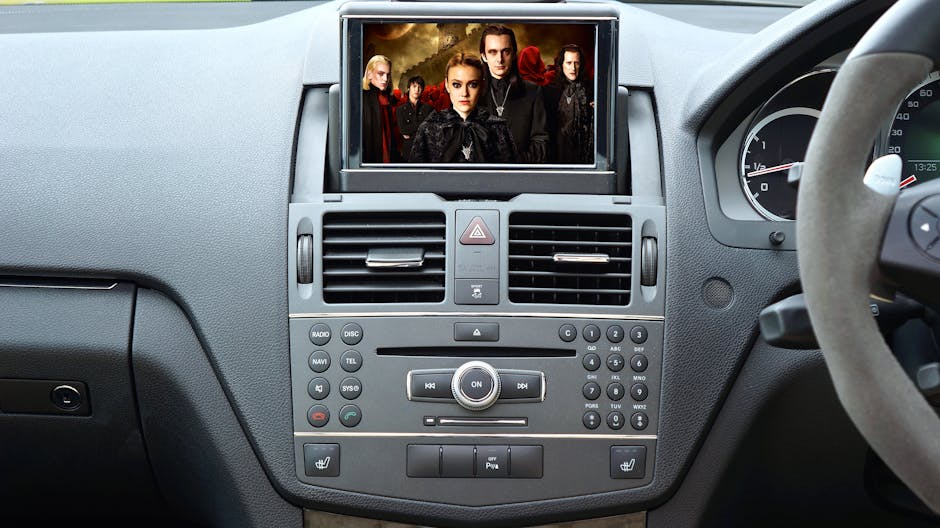How Car Infotainment Systems Are Evolving
Introduction
The modern automobile is no longer just a means of transportation—it has evolved into a sophisticated hub of connectivity, entertainment, and convenience. At the heart of this transformation lies the car infotainment system, a technological marvel that has undergone rapid advancements over the past decade. From basic radio and CD players to fully integrated touchscreen displays with voice recognition, artificial intelligence (AI), and over-the-air (OTA) updates, infotainment systems have become a defining feature of today’s vehicles.
This article explores the evolution of car infotainment systems, examining key technological milestones, current trends, and future innovations that promise to redefine the driving experience.
The Early Days: From AM Radios to CD Players
The concept of in-car entertainment dates back to the 1930s when AM radios were first introduced in vehicles. These early systems were simple, offering limited functionality, but they marked the beginning of a new era where drivers could enjoy music and news while on the road.
By the 1980s and 1990s, cassette players and later CD players became standard features, allowing drivers to bring their own music collections into the car. However, these systems were still rudimentary, with manual controls and no integration with other vehicle functions.
The Digital Revolution: Touchscreens and GPS Navigation
The early 2000s saw a significant shift with the introduction of digital displays and GPS navigation. Automakers like BMW and Mercedes-Benz pioneered the use of dashboard-mounted screens, while companies like Garmin and TomTom popularized portable navigation devices.
One of the most groundbreaking developments was the introduction of Apple CarPlay and Android Auto in the mid-2010s. These platforms allowed seamless smartphone integration, enabling drivers to access maps, music, and messaging apps directly through the car’s infotainment system. Suddenly, drivers no longer had to rely on clunky built-in navigation—they could use familiar smartphone interfaces while keeping their hands on the wheel.
The Rise of AI and Voice Assistants
As artificial intelligence advanced, so did infotainment systems. Voice assistants like Siri, Google Assistant, and Amazon Alexa became integrated into vehicles, allowing drivers to control music, make calls, and adjust climate settings using natural language commands.
Tesla’s large touchscreen displays and AI-powered voice recognition set a new benchmark for user interaction. Meanwhile, luxury brands like Audi and Mercedes-Benz introduced augmented reality (AR) navigation, overlaying directional arrows onto live camera feeds for a more intuitive driving experience.
Connectivity and Over-the-Air Updates
Modern infotainment systems are no longer static—they evolve over time thanks to over-the-air (OTA) updates. Tesla was among the first to implement this technology, allowing cars to receive software improvements remotely, much like smartphones. Other automakers, including Ford and GM, have followed suit, ensuring that infotainment systems stay up-to-date with the latest features and security patches.
Additionally, 5G connectivity is now being integrated into vehicles, enabling faster data transfers, real-time traffic updates, and enhanced cloud-based services. This means future infotainment systems will support streaming services, cloud gaming, and even video conferencing while parked.
Personalization and Biometric Integration
The next frontier in infotainment is personalization. Systems now use facial recognition and driver profiles to adjust seat positions, climate settings, and preferred media playlists automatically. Some luxury vehicles even incorporate biometric sensors to monitor driver fatigue and stress levels, adjusting cabin ambiance accordingly.
BMW’s iDrive 8 and Mercedes’ MBUX Hyperscreen are prime examples of AI-driven personalization, learning user habits and offering predictive suggestions—such as recommending a favorite coffee shop when driving past it in the morning.
The Future: Autonomous Driving and Immersive Experiences
As autonomous driving technology progresses, infotainment systems will shift from being driver-focused to passenger-centric. With self-driving cars, occupants will have more free time, leading to innovations such as:
- Augmented reality (AR) windshields displaying real-time information about landmarks and points of interest.
- Holographic displays for interactive entertainment and virtual meetings.
- Advanced AI co-pilots capable of holding natural conversations and assisting with trip planning.
Companies like Waymo and Cruise are already experimenting with fully autonomous ride-hailing services, where infotainment plays a central role in keeping passengers engaged during their journeys.
Challenges and Considerations
Despite these advancements, challenges remain:
- Distraction risks: Overly complex interfaces can divert attention from driving.
- Cybersecurity threats: Connected cars are vulnerable to hacking, requiring robust encryption.
- Fragmentation: Different manufacturers use proprietary systems, leading to inconsistent user experiences.
Regulators and automakers must balance innovation with safety to ensure that infotainment systems enhance—rather than compromise—the driving experience.
Conclusion
The evolution of car infotainment systems reflects broader trends in technology—connectivity, AI, and personalization. What started as a simple radio has transformed into an intelligent, adaptive interface that enhances safety, convenience, and entertainment.
As we move toward an era of autonomous vehicles, infotainment systems will become even more immersive, blurring the lines between transportation and digital living. The car of the future won’t just take you from point A to point B—it will be a mobile entertainment hub, office, and social space, all rolled into one.
The journey is just beginning, and the road ahead promises even more exciting innovations.

